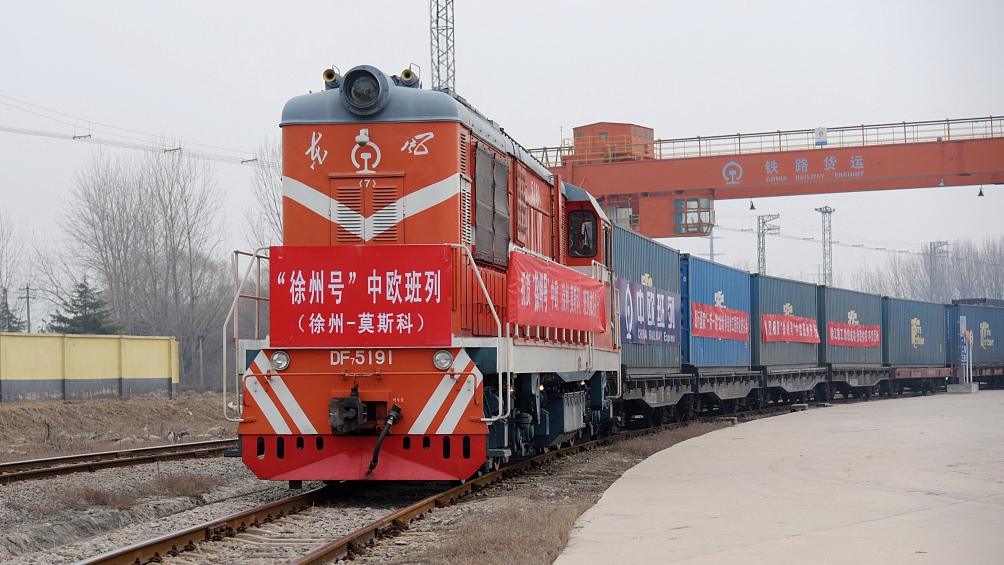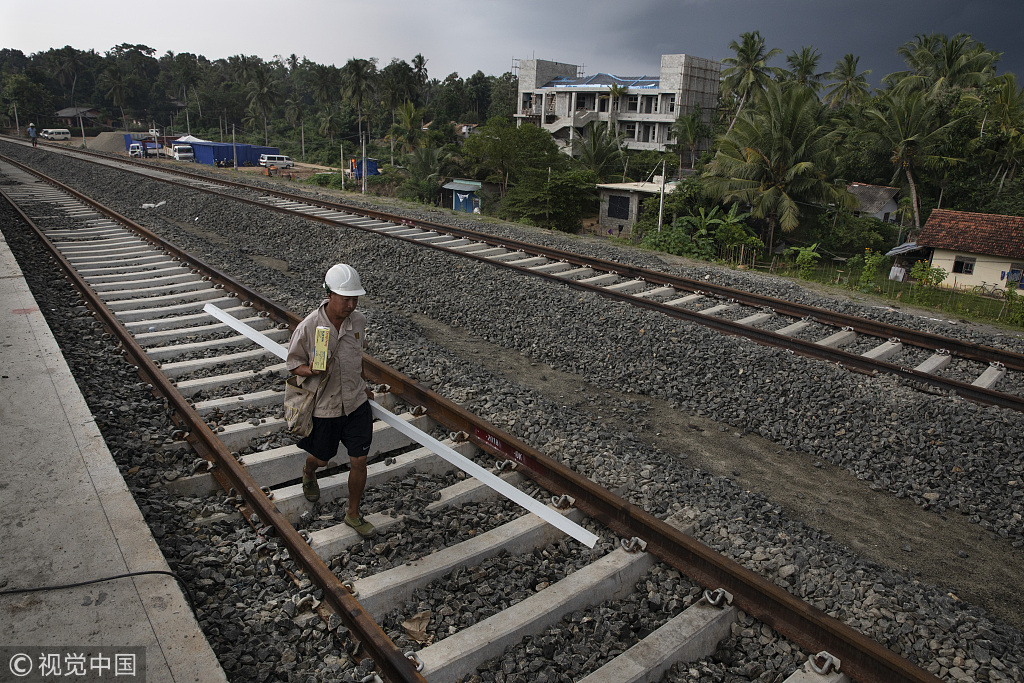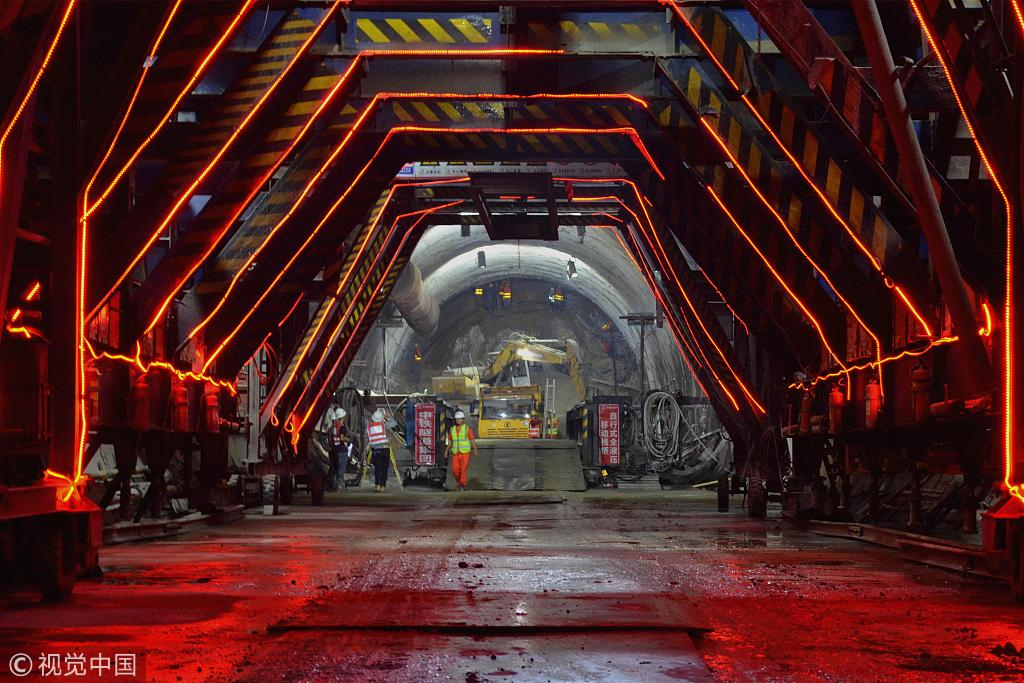
Opinion
20:01, 08-Mar-2019
BRI presents countries with new opportunities for industrialization
Updated
11:15, 09-Mar-2019
Cheng Dawei

Editor's note: Cheng Dawei is a professor at the School of Economics, Renmin University of China. The article reflects the author's views, and not necessarily those of CGTN.
Regional cooperation has made it possible to structure a global production network through direct investment and enables trade to play an increasingly important role in promoting development.
The "flying geese pattern of development," which includes the vertical division of labor between industries, occurred in East Asia (with Japan leading the flock of geese, the Four Asian Tigers in the middle, and China and some Association of Southeast Asian Nations members at the end) against the backdrop of industrial transfer and upgrading in the 1960s and laid the foundation for the long-term economic growth of the region.
Among the gradual regression of globalization, China has begun to explore more regional opportunities. That is why the country advocated the Belt and Road Initiative (BRI). Proposed by China in 2013, the BRI aims to build trade and infrastructure network connecting Asia with Europe and Africa, based on ancient land and maritime trade routes.
By far, China has signed more than 100 cooperation agreements with 88 countries and international organizations under the BRI. Statistics show that China's trade with and investment in countries along the BRI routes have maintained a strong momentum, Silk Road Fund has supported 19 BRI projects involving 80 billion U.S. dollars. The BRI is being turned into reality from a concept, bringing more win-win results to countries involved.

A worker walks along the tracks of a new Chinese-managed and designed train station in Beliatta, Sri Lanka, November 18, 2018. /VCG Photo
A worker walks along the tracks of a new Chinese-managed and designed train station in Beliatta, Sri Lanka, November 18, 2018. /VCG Photo
This year, Chinese Premier Li Keqiang delivered the Government Work Report at the 2nd session of the 13th National People's Congress, where special importance was given to BRI. The report says China will continue to promote international cooperation under the BRI. Some policies have been made, like building high-quality overseas platforms, promoting Silk Road E-Commerce, accelerating opening up, to support northeast China to develop itself as a major window for northward opening up.
Many businesses are keen to explore opportunities in BRI markets. In eastern Uganda, a Hydropower Plant constructed by Chinese companies awaits official commission in March 2019, and the project has passed tests from engineers, environmentalists and conservationists.
China's private enterprises are the leading force in trade between China and BRI countries, contributing 43 percent to the trade volume. These private enterprises are truly global. One of the companies I know has an office in Shanghai and cooperates with more than 20 countries, including Vietnam, Indonesia, Iraq, Saudi Arabia, the United States, Serbia, Morocco and Colombia, offering flame detectors and igniter systems to power plants. I met the CEO Huang at his Shanghai office in 2018. He just returned to Indonesia and told me that BRI gives his company an opportunity to cooperate with big power companies and find new markets.
However, China's plan to push BRI forward is sometimes viewed as a threat or a challenge to the West. Some think that BRI is not just another "new Silk Road project;" instead, it is a consistent ambitious Eurasian strategy. Some complain that the BRI projects lack transparency. Some even worry about China's political power, saying the infrastructure being built by China will benefit China's power, making China the dominant economic force in the region.

Turkey's President Recep Tayyip Erdogan leaves the stage after speaking during the opening ceremony of the Belt and Road Forum at the China National Convention Center (CNCC) in Beijing, Sunday, May 14, 2017. /VCG Photo
Turkey's President Recep Tayyip Erdogan leaves the stage after speaking during the opening ceremony of the Belt and Road Forum at the China National Convention Center (CNCC) in Beijing, Sunday, May 14, 2017. /VCG Photo
To answer these concerns, let me ask a question first: in the era of globalization, can a country develop without relying on the global market? After World War II, China was initially a planned economy, and the government was unfamiliar with the concept of a global economy. The recent integration of China into globalization gives China a chance to develop. Most countries along the BRI routes are developing countries. A large portion of these countries do not enjoy a share of the benefits of globalization and are in dire need of joining globalization.
China benefit from the opening-up policy and the BRI aims to fully utilize existing bilateral and multilateral mechanisms between China and countries along the BRI route, existent and effective regional cooperation platforms, and the historical reputation of the ancient Silk Road to promote fair development, actively encourage economic partnerships with coastal countries, and co-create a politically accepting, economically integrated, and culturally accepting open of shared interests, destiny and responsibility.
My second question is what is the major need for countries to join the BRI? Regarding incomes, Central and Eastern European countries have high average incomes. By contrast, the average incomes in approximately 70 percent of all other countries involved in the BRI routes are below the global average. Thus, a common aim of those countries is to promote economic growth, and regional cooperation is one way of achieving the goal. China's experience shows globalization has provided an opportunity for China to participate in the international division of labor, and become more competitive.

China-Laos railway is under construction in Xinping county, China's Yunnan Province, September 28, 2018. /VCG Photo
China-Laos railway is under construction in Xinping county, China's Yunnan Province, September 28, 2018. /VCG Photo
A previous study indicated that import substitution strategies have become outdated. The reason is simple: countries that adopt import substitution strategies may avoid national trade, causing domestic production systems to close down.
BRI will provide developing countries with new opportunities for industrialization and economic growth. By participating in regional cooperation, countries become involved in international trade and join industrial networks, thereby creating and improving domestic production systems.
The third question is how can we work together? I think the most important thing is BRI participants should accept the rules and constraints of an open cooperation system. This means BRI should respect the existing international trade rules and frameworks of the multilateral system. Then based on the principles of the international law, China should work together with other countries to establish BRI trade governance, like improving transparency.
In regards to political power, yes, regionalism has political significance. From the perspective of geopolitics, regionalism can be adopted as a tool to achieve strategic balance.
China proposed the BRI amidst the recession of globalization and global trade governance. China's historical background raises the question of how the relationship between the BRI and globalization should be viewed. Policies must drive development and progress among the entire human race to become an inevitable trend and must achieve globalization.
(If you want to contribute and have specific expertise, please contact us at opinions@cgtn.com.)

SITEMAP
Copyright © 2018 CGTN. Beijing ICP prepared NO.16065310-3
Copyright © 2018 CGTN. Beijing ICP prepared NO.16065310-3